Breeds of Chickens - C
A |
B |
C |
DEFG |
HIJ |
KL |
M |
NOPQ |
R |
S |
TUVWXYZ
|
 California Gray California Gray
|
|
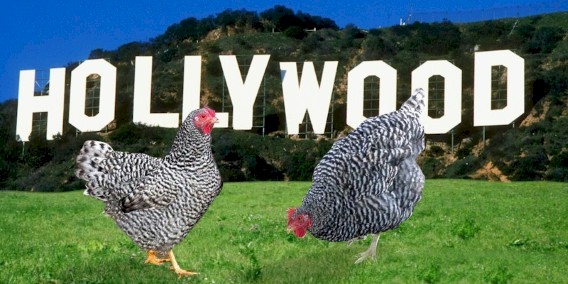 California Gray
chickens are an American breed developed by James Dryden during the 1930s. They
are a dual-purpose chicken: they are good for meat production and egg laying.
California Gray
chickens are an American breed developed by James Dryden during the 1930s. They
are a dual-purpose chicken: they are good for meat production and egg laying.
First the California
White breed was developed with a White Leghorn rooster bred to three Barred
Plymouth Rock hens. Then a Barred Plymouth Rock rooster was bred to California
White Leghorn hens to make the California Gray.
Barred Plymouth
Rock chickens are a very popular and heavy dual purpose breed with alternating
black and white stripes. On the other hand, White Leghorn chickens are white,
small in size and excellent white eggs layer. The result was a naturally
autosexing breed with gray barred plumage. They are not as large
...
|
 |
|
 Campine Campine
|
|
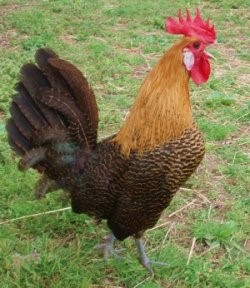 Campine Chickens’ intelligent nature, upright carriage, and
stunning plumage make them a show favorite. They are rare in America, but they
enjoy popularity in Northern Europe. They are an active breed, and they do
better as show birds and layers than as pets. They weigh only four to five
pounds, but they produce an average of three, medium-white eggs a week on
modest feed.
Campine Chickens’ intelligent nature, upright carriage, and
stunning plumage make them a show favorite. They are rare in America, but they
enjoy popularity in Northern Europe. They are an active breed, and they do
better as show birds and layers than as pets. They weigh only four to five
pounds, but they produce an average of three, medium-white eggs a week on
modest feed.
Although of docile temperament, detractors of the breed
label them “wild.” Campines like their freedom and will chafe at confinement in
good weather. Like many foragers they have an inherent intelligence necessary
for free-range chickens. The term “cocky” applies to the Campine demeanor. They
strut with the spirit of a fowlish thoroughbred. As a group
...
|
 |
|
 Catalanas Catalanas
|
|
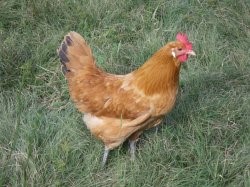 Catalanas are a dual-purpose chicken that are both good as
egg layers and meat animals. They lay four eggs a week in white, cream, or pink
colors. The standard size Catalana makes a good meat production fowl. Catalanas
handle extreme heat well—a fact which accounts for their popularity in Spain
and Latin America. They like to forage, brood just a little, and generally
exercise their independence. Many breeders value Catalanas, especially the
bantam size, as ornamentals more than egg or meat producers. They are lively,
active, flighty, seldom friendly; and do best under free-range conditions.
Catalanas are a dual-purpose chicken that are both good as
egg layers and meat animals. They lay four eggs a week in white, cream, or pink
colors. The standard size Catalana makes a good meat production fowl. Catalanas
handle extreme heat well—a fact which accounts for their popularity in Spain
and Latin America. They like to forage, brood just a little, and generally
exercise their independence. Many breeders value Catalanas, especially the
bantam size, as ornamentals more than egg or meat producers. They are lively,
active, flighty, seldom friendly; and do best under free-range conditions.
Catalanas usually display a basic light buff plumage with
reddish buff hackles. All varieties have a greenish-black tail. They stand
...
|
 |
|
 Chantecler Chantecler
|
|
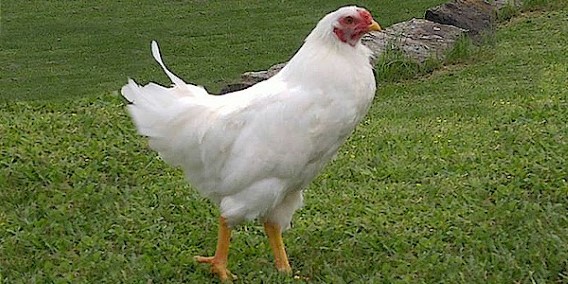 Chantecler chickens
were developed in Canada. They can handle cold well; but have little tolerance
to heat. They have a tight feathered plumage with a thick under layer of down.
Chantecler chickens
were developed in Canada. They can handle cold well; but have little tolerance
to heat. They have a tight feathered plumage with a thick under layer of down.
They are a
dual-purpose chicken. They lay four to seven medium, brown eggs a week and are
large enough to be suitable for good meat production. They mature quickly and
lay consistently far into the cold months producing as many as 210 eggs a year.
Chanteclers
reflect their environment. Hardy, rugged, and ready to face the cold, they
prefer the outdoors to confinement. A little high strung, they will tolerate
the coop but will grow temperamental when confined for long periods of time.
Owners rate Chanteclers as non-aggre
...
|
 |
|
 Ciuffina Ghigi Ciuffina Ghigi
|
|
 The Ciuffina Ghigi breed, along with its various strains, owes its existence to the ingenuity and meticulous research of Professor Alessandro Ghigi. Serving as the Director of the Stazione Sperimentale di Pollicoltura in Rovigo during the 1920s and 1930s, Professor Ghigi delved into the intricacies of hereditary traits, particularly focusing on unique characteristics such as cerebral or cranial hernia observed in Padua chickens. This hernia, which results in the development of a prominent crest, was studied alongside distinctive comb and nostril shapes to understand their genetic transmission in comparison to other common chicken breeds.
The Ciuffina Ghigi breed, along with its various strains, owes its existence to the ingenuity and meticulous research of Professor Alessandro Ghigi. Serving as the Director of the Stazione Sperimentale di Pollicoltura in Rovigo during the 1920s and 1930s, Professor Ghigi delved into the intricacies of hereditary traits, particularly focusing on unique characteristics such as cerebral or cranial hernia observed in Padua chickens. This hernia, which results in the development of a prominent crest, was studied alongside distinctive comb and nostril shapes to understand their genetic transmission in comparison to other common chicken breeds.
Professor Ghigi''s pioneering work began with the creation of the black strain, achieved thro
...
|
 |
|
 Cochin Cochin
|
|
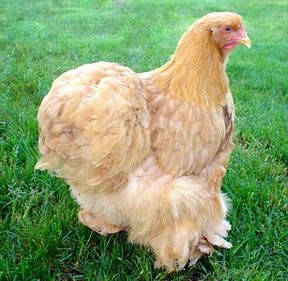 Cochin Chickens
eat just about anything and suffer from the resultant obesity. However, if one
wants a chicken to love, choose a Cochin.
Cochin Chickens
eat just about anything and suffer from the resultant obesity. However, if one
wants a chicken to love, choose a Cochin.
Their large size,
full plumage and heat-producing appetites equips them for the cold weather.
Cochins only lay an average of two, medium brown eggs per week or 120 per
annum. Cochins seldom fly or wander and forage little. Overall, they produce
poorly in every category. They lay few eggs, mature slowly as a meat fowl, and
succumb to metabolism, heart, liver, and fertility disease. However, what they
lack in production, they make up in personality.
Cochin are
peaceful, friendly, quiet, and easily handled. They seemingly like confinement
and make themselves comf
...
|
 |
|
 Cornish Cornish
|
|
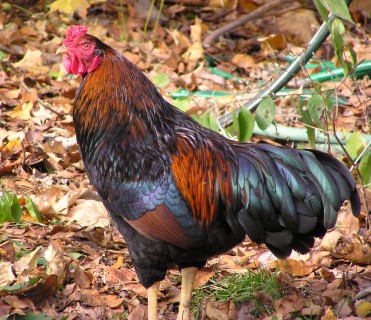 Cornish, also
known as Indian Game, Chickens are bred specifically for meat production. They
produce meat more efficiently than any other chicken. They reach a dressing
weight of five pounds at five weeks. Cornish chickens lack the typical hairy
feathers left over after plucking other breeds—a fact which saves processors
the energy and time of singeing the carcass prior to butchering. They show
little desire to forage and generally handles confinement well.
Cornish, also
known as Indian Game, Chickens are bred specifically for meat production. They
produce meat more efficiently than any other chicken. They reach a dressing
weight of five pounds at five weeks. Cornish chickens lack the typical hairy
feathers left over after plucking other breeds—a fact which saves processors
the energy and time of singeing the carcass prior to butchering. They show
little desire to forage and generally handles confinement well.
They are
considered loud and intractable. The roosters readily show aggression and Cornish
chicks at times show cannibalism. Health problems associated with their rapid
growth prevent the kind of activity common to most chickens. The high feed
conversion ratios give
...
|
 |
|
 Crevecoeur Crevecoeur
|
|
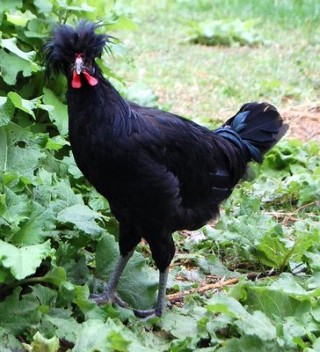 Crevecoeur chickens are a dual-purpose bird; but they serve
mainly as an ornamental show bird today. They do, however, lay 120 medium eggs
per annum and matures into a meaty fowl in a reasonable amount of time.
Crevecoeur chickens boast a short grained, extremely white meat on small boned
skeleton. They have a high percentage of meat to total carcass weight.
Crevecoeur chickens are a dual-purpose bird; but they serve
mainly as an ornamental show bird today. They do, however, lay 120 medium eggs
per annum and matures into a meaty fowl in a reasonable amount of time.
Crevecoeur chickens boast a short grained, extremely white meat on small boned
skeleton. They have a high percentage of meat to total carcass weight.
The American Livestock Breeds Conservancy has listed the
Crevecoeur as endangered worldwide. The US has less than 500 Crevecoeur breeding
chickens.
Although described as an active breed, Crevecouers bear
confinement well and rarely go broody in the coop. Owners characterize them as
calm, friendly, and easy to handle. However, some Crevecoeur breeders
...
|
 |
|
 Cubalaya Cubalaya
|
|
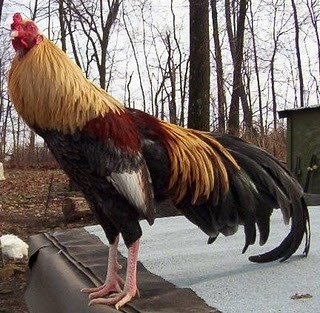 Cubalaya chickens are classified as game birds and come from
fighting stock. Although more aggressive than the common breed of chicken, they
display less aggression than most game birds. Cubalayas do surprisingly well as
egg layers and meat producers. They lay four or five medium-sized, tan eggs a
week. As a table bird they have a fine grained white meat. Cubalayas can take
up to three years to fully mature; however, most can reproduce at six months of
age. Cubalayas tolerate both heat and humidity well. Cuba uses Cubalayas for
meat and eggs while the US recognizes them primarily as ornamentals.
Cubalaya chickens are classified as game birds and come from
fighting stock. Although more aggressive than the common breed of chicken, they
display less aggression than most game birds. Cubalayas do surprisingly well as
egg layers and meat producers. They lay four or five medium-sized, tan eggs a
week. As a table bird they have a fine grained white meat. Cubalayas can take
up to three years to fully mature; however, most can reproduce at six months of
age. Cubalayas tolerate both heat and humidity well. Cuba uses Cubalayas for
meat and eggs while the US recognizes them primarily as ornamentals.
First time owners express surprise at the friendliness and
curiosity of Cubalayas. Chicks will eat from human hands at birth. Th
...
|
 |
Top
|